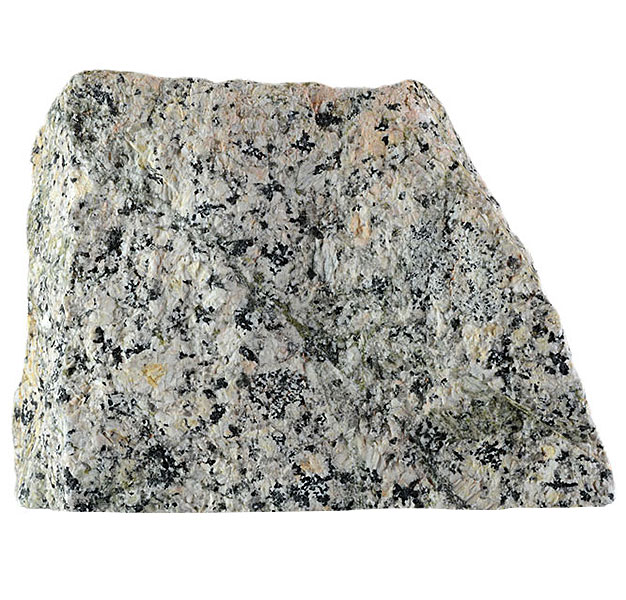
Fact sheet
This metamorphosed dolerite comes from the Preseli Mountains, Pembrokeshire, Wales. It is particularly notable for its spotted appearance in hand specimen, an effect caused by low grade regional metamorphism during the Caledonian orogeny. This rock and its location are particularly important to the history of the United Kingdom because the same rock was used to build Stonehenge, over 200 km to the east. Although most of Stonehenge is built of sandstone, this spotted dolerite was used for some of the smaller upright stones, known as bluestones because of the slight blue colouring they have and to distinguish them from the other stones at Stonehenge. A debate has raged among academics over many years concerning the transport of the rock from Wales to Salisbury Plain. Was the rock transported by ice in the last glaciation, or was it quarried and transported by humankind during the building of Stonehenge?
In thin section the rock contains large pyroxene (augite) and altered plagioclase grains. The original igneous minerals have been partially altered to chlorite and epidote during greenschist grade metamorphism, and although large pyroxene grains remain, almost all the plagioclase has been altered. The remainder of the fine-grained matrix was also altered by metamorphism, although many igneous mineral shapes are evident.
The United Kingdom Virtual Microscope (UKVM) collection consists of igneous, sedimentary and metamorphic rocks from around the UK.
It is intended as a teaching resource, helping to tell the story of the common rock types and how they form, and reflecting the history of the UK at the margins of the continent of Europe. The collection is a series of teaching sets, for example igneous rocks from the North Atlantic Igneous Province and SW England; high-temperature metamorphic rocks from Scotland and low-temperature metamorphic rocks from Wales; and sedimentary rocks, including English limestones and sandstones.









